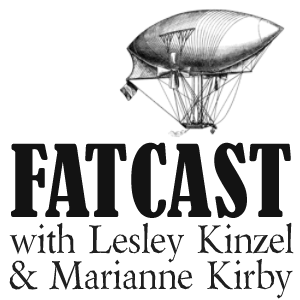Maybe I should put a photo of my “missing” hips on a milk carton…
By Guest Writer | August 22, 2008
Last week(ish), deciding, apparently, that I hadn’t been quite had my fill of being defeated and demoralized at my 9-5, I set out to try and find a pair of jeans. My less-than-stellar fitting lb & torrid pairs (acquired on my last trip to Minneapolis) were (and still are) rapidly disintegrating and I was getting really sick of my other work bottom half coverings (plaid bermudas that bag out like two sizes over the course of the day, it SUCKS). Addition-Elle has been papering the town with their New! Better! Denim! adverts, so I figured I’d check out what all the textual yelling was about. The store was pretty dead and the salesperson was double triple keen on helping me find something that would work, which, apparently, involved me lifting up my shirt so she could better look at how my current pants fit, and my body shape. Well, I thought it was a little excessive, but then so am I, so I obliged and she gave me a scrutinizing look up and down and then pronounced “well, you don’t really have any curves, so that’s your problem.” Now, I have children grabbing my stomach and yelling “hello baby!” into it all day long*, so it’s not as if i’m especially sensitive or shocked by people making comments about my fat/body but it really irked me to have my body described this way. I mean, having someone tell you your body (as opposed to limited fit options) is a “problem” is pretty obviously objectionable, but curiously, that’s not really the part that bothered me. I was disturbed that someone would look at my body and see “no curves.” For the past week or so, I’ve been thinking about the why and what of that.
This isn’t the first time someone has told me that my body “isn’t curvy” in a pejorative sort of way. The first person to take note of my awol curves was a salesperson at a Lane Bryant in Minneapolis. She insisted on measuring me so that I could find my perfect pair in the Right Fit denim and told me that my “lack of hips” meant I should try the yellow fit. I told her that i found this odd, because even though I don’t have very pronounced hips in comparison to my waist, I have a really round and jutty behind (which me & the dictionnary people would seem to think constitutes a curve, but maybe we’re wrong on that) which usually means I need a rounder cut to accomodate it. Anyway, Right Fit Pusher Expert was adamant that my measurements added up to yellow, and I figured she must have fit a lot of people, so I gave her the benefit of a doubt and tried pair after pair of the yellow fit even after the fit of the first pair (cutting into the front of me, too tight in the thigh) made it clear it was the WRONG cut for me and not suited to my body. Let’s take a minute to review the claims and implications of the Right Fit Campaign, shall we?
Claim: LB “scanned more than 14,000 women’s bodies in the Intellifit machine, a fitting-room sized instrument that electronically detects measurements and records over 200,000 data points… just to fit you better.” (Does anyone else find it highly unlikely and extremely dubious that 14,000 womens bodies can be easily/productively sorted into THREE groups?)
Implication: If none of the three WHOLE fits are right for you, then you defy the futuristic science of Intellifit (which is totally a legitimate scientific instrument/process, btw) then your body must be deviant/”wrong.”
When I started university as a recovering dangerous dieter, I was an inbetweenie and on my body 14/16 means a fat distribution that somehow reads to people as more “hourglass” even though my hip/ass shape doesn’t change and I have never not had a lower adomen overhang tummy. As I put on weight through university, my mom regularly made comments about how tragic it was that I “was losing my voluptuous hourglass figure.” She always delivered these remarks with wistful head shaking, as if I was purposely ruining my most valuable posession. (I guess she thought I was). At the time I found this devastating. Now, when I see photos of me from the early noughties, I’m confused since I am basically a smaller version of the 8 shape i am now. It seems that what my mom was really expressing was that being a size 14 with DDs is closer to the ideal (or “hourglass”) than being a size 20 with a G cup. I’m not the first person to write about shape privilege, and I definitely won’t be the last, but I guess my recent increase (pretty firmly into a size 20) has got me thinking more about whether or not it’s a concept or really just a dressed-up offset of the thinner=better imperative.
Now, let’s be clear, that i’m not against being shaped like something other than how i’m shaped now, (honestly if my bottom half was actually smooth and curveless, like say, that of a lego person, I’m fairly certain I could effortlessly & inexpensively create fabulous pants and skirts with a few cuts in a square of fabric) or that I buy into the idea that to be a woman, I should have full hips that do nothing but “undulate” (Harlequin romance style), it just sucks that I, like 99% of other women am being actively reminded that there really is only one acceptable body type (for both thin and fat women alike) and little understanding/acknowledgment of bodies that fall outside that description. (Even in the case of LB’s THREE fits, the curvy/hourglass ideal is upheld and goes unchecked. The way in which the fits are named and visually and textually arranged on the website suggests a sort of hierarchy in which curvy is at the top; e.g. “straight” and “moderately curvy” are meant to be defined in relation to “curvy”, they are steps up to the ideal of the hourglassy “curvy”). I am not an hourglass, and therefore according to society/clothing I am missing something. My body is wrong, and not quite there in terms of the expected and revered feminine ideal. I fall short of being a real woman (and only real women deserve a pair of jeans that look good). I don’t have prounouced hips, but I am visibly fat therefore my body (from the breasts down) is understood (from the front, at least) as excessive at the same time that it is lacking (an important marker of femininity). I think it’s both sad and noteworthy that both salepeople described my body in negative terms/space suggesting flaws or failings on my part (the things I lack) versus identifying the body that I do have, the one that actually exists, and is/was present (too present, as it’s a fat body)right there in front of them.
*not random children, i work at a daycare. it’s probably funnier to imagine small, random children, yelling into my stomach though.
Comments are closed.





 Two Whole Cakes is a blog written by
Two Whole Cakes is a blog written by 

